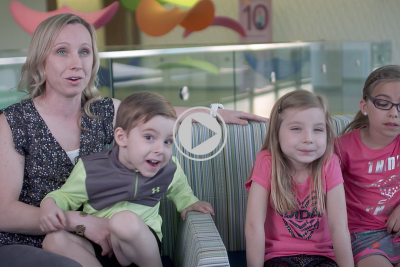One of the important decisions made daily by every physician is whether a child’s infection is viral or bacterial. Antibiotics are medicines that can kill bacteria. They have saved many lives and prevented many complications. However, antibiotics have no impact on viral infections and are unnecessary in these cases. And some symptoms are overrated as indicators of bacterial infection. Yellow nasal discharge is more likely to be a normal part of recovery from a viral cold than a clue to sinus infection. Also, yellow sputum is a normal part of viral bronchitis or tracheitis and not always a symptom of pneumonia. High fevers can be viral or bacterial.
VIRUSES CAUSE MOST INFECTIONS IN CHILDREN:
- All colds
- All cases of croup
- Most coughs & fevers
- Most sore throats
- Majority of diarrhea and vomiting
COMMON BACTERIAL INFECTIONS:
- Most ear infections
- Most sinus infections
- 10% of sore throats (Strep Throats)
- Some pneumonia
- Skin infections
DO WE NEED ANTIBIOTICS ROUTINELY TO PREVENT BACTERIAL INFECTIONS?
Unless there is a specific reason, like an immune-compromised child or an exposure to a serious bacterial infection, it is unnecessary to prescribe antibiotics for the prevention of infections. After a cold, about 10% of children develop an ear infection. And only 1% develop a sinus infection. So why give unnecessary antibiotics to the other 89% who don’t need them? It is a smart decision to save antibiotic usage for those children who go on to develop a bacterial infection. See CDC guidelines for indications for use of prophylactic antibiotics.
BACTERIAL RESISTANCE
Excessive use of antibiotics is the major cause of resistant bacterial strains. Research shows that 50% of prescriptions for antibiotics are inappropriate. Especially when they’re given for coughs and colds. And when we turn to newer and expensive antibiotics, bacteria eventually become resistant to them as well.
SIDE EFFECTS OF ANTIBIOTICS
All antibiotics have side effects. For instance, common side effects are diarrhea, nausea, vomiting, or a rash. Plus, sometimes a child with a viral infection started on antibiotics can develop a viral rash. They then become mislabeled as allergic to a family of antibiotics. This way, a potentially useful antibiotic may not be available when the child really needs it.
SUMMARY
So, don’t always wish your child was on an antibiotic every time he or she is sick with a fever, cough or cold. If your child develops side effects from the antibiotic that was started for a viral infection, he or she will feel worse instead of better. Remember, antibiotics do not shorten the course of a viral illness. So don’t pressure your child’s doctor for an unnecessary antibiotic. I am sure the doctor will prescribe an antibiotic if they think it is a bacterial infection based on the signs and symptoms in the child. Most viral infections can be effectively treated with OTC fever medications, plenty of fluids, rest and lots of TLC! Always call your pediatrician if your child has a persistent fever, worsening symptoms of cough, poor feeding, dehydration, lethargy or any other acute symptoms.





Comments